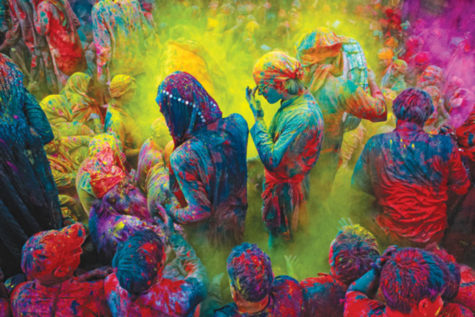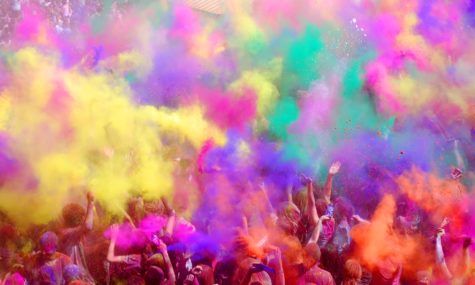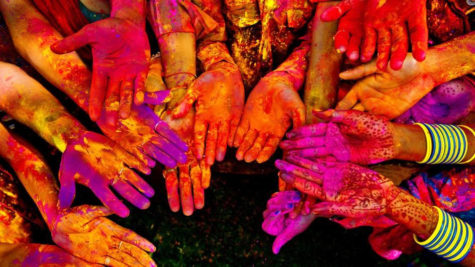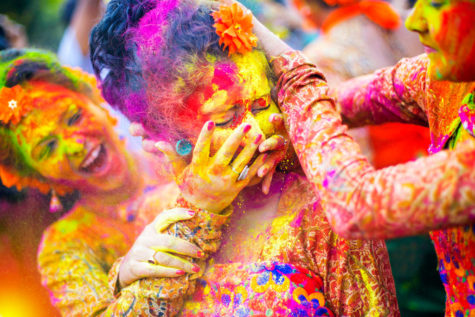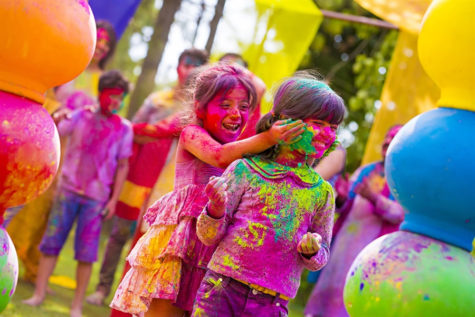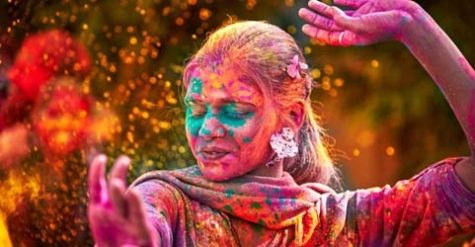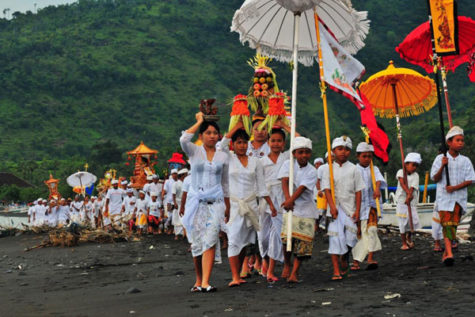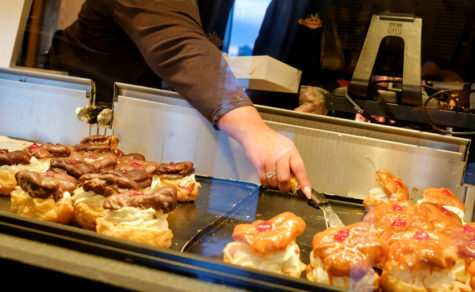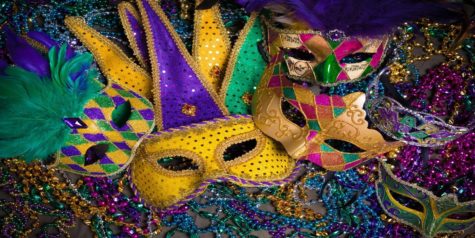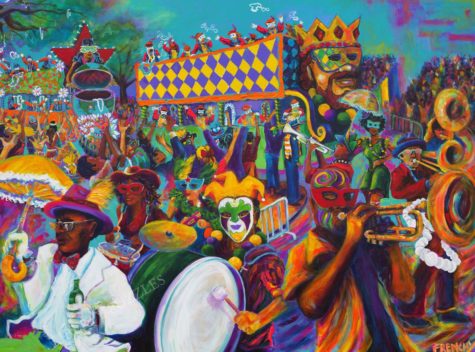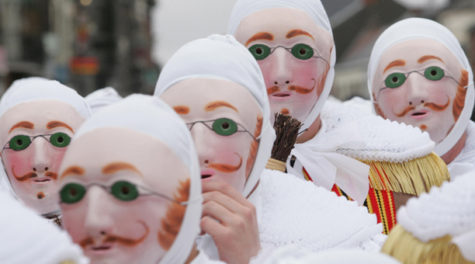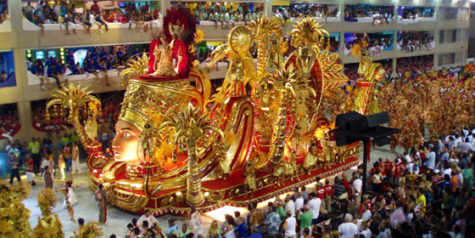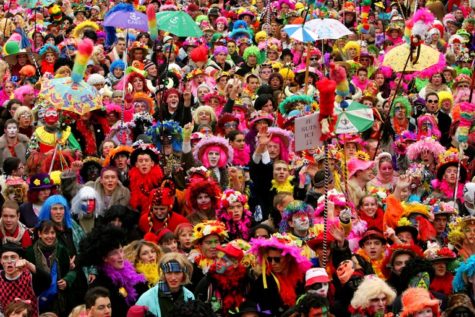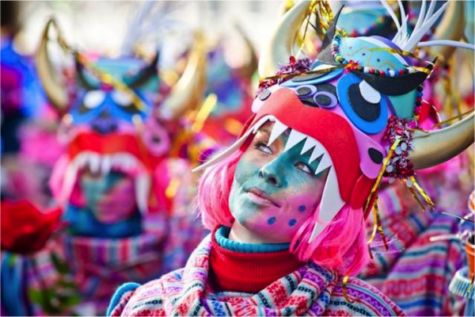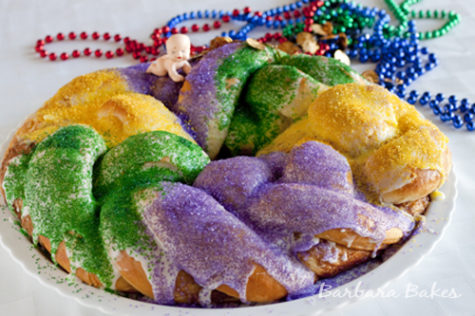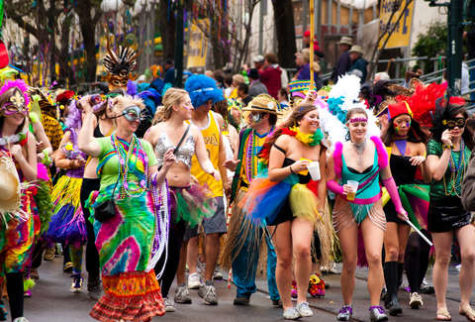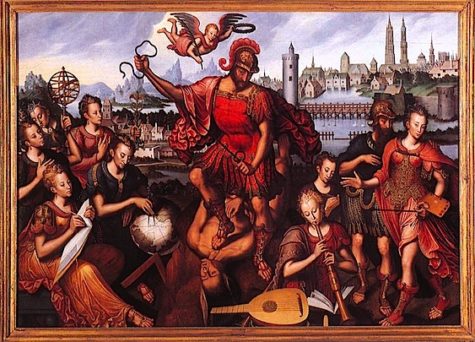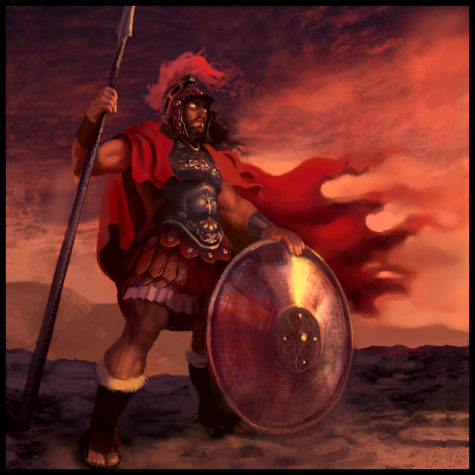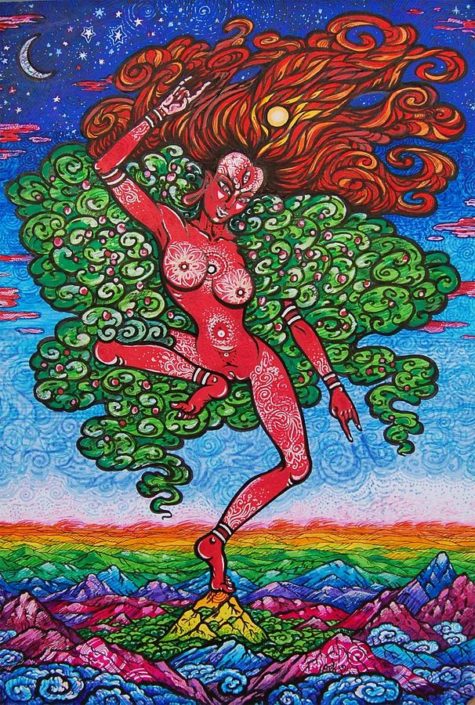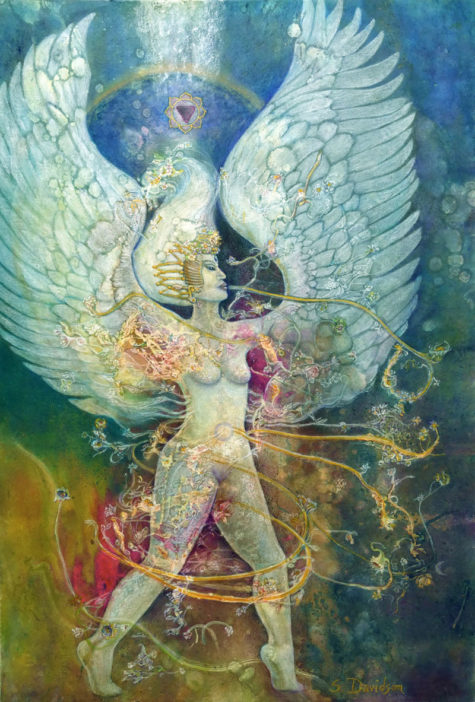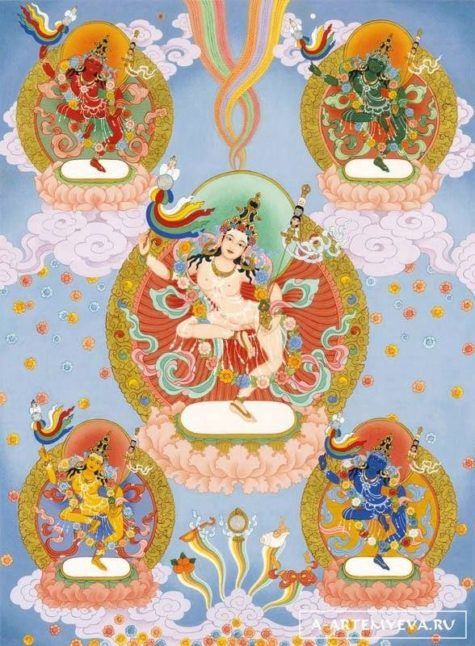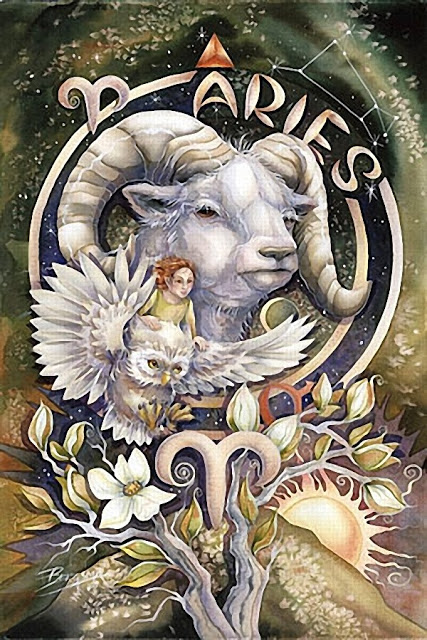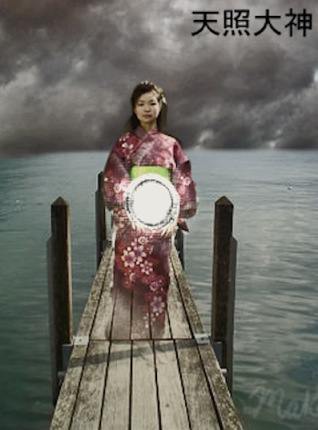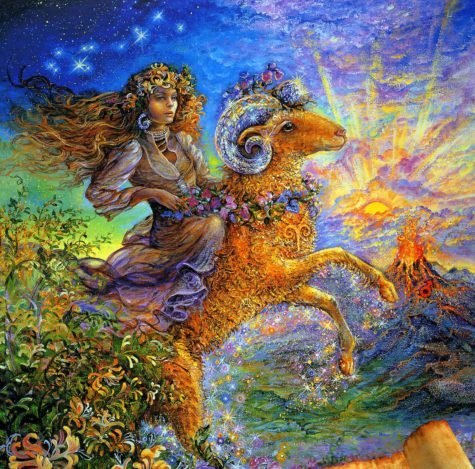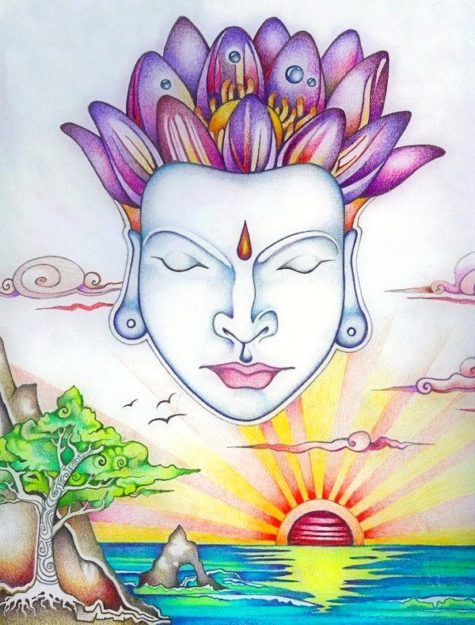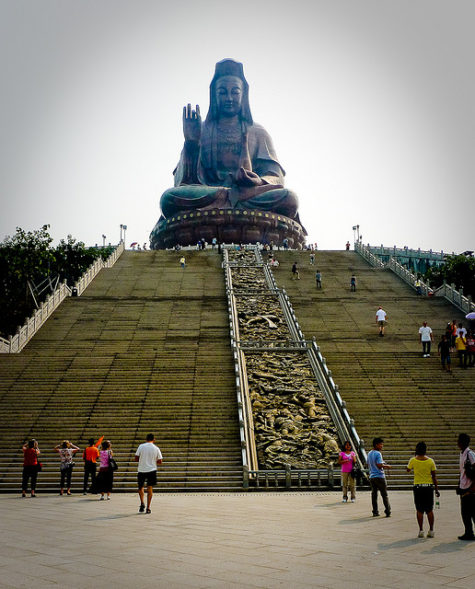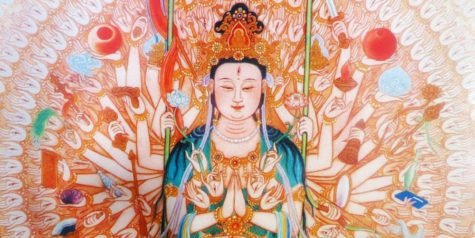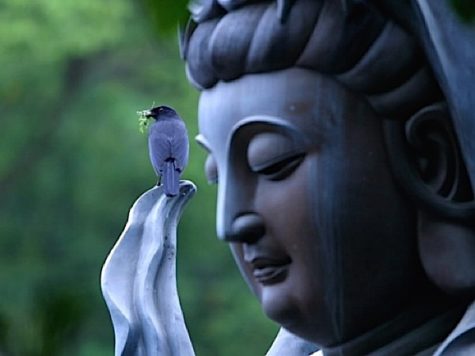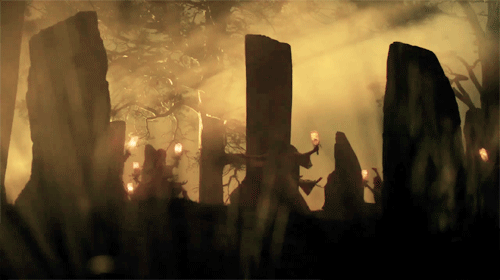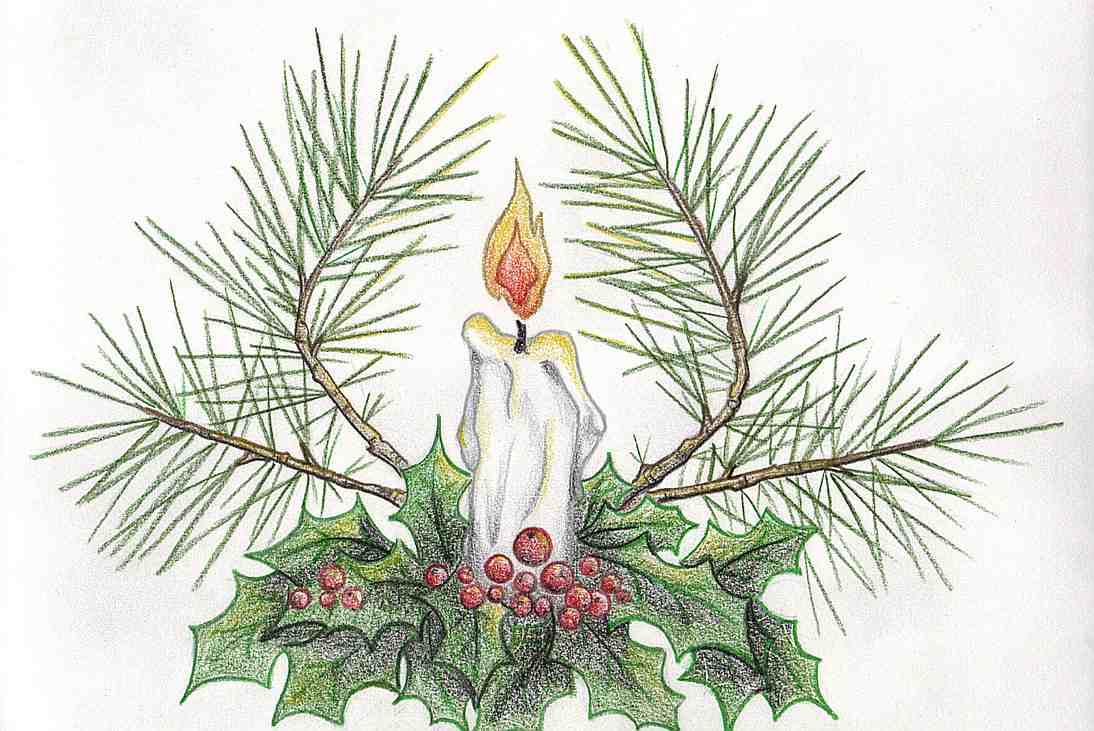March
Holika, or Holi for short, is the Festival of Color. It marks the end of the nippy winter months and the beginning of spring. This festival comes during the full moon in the Hindu month of Phagan, in February or March. In 2019, it falls on March 21, with the Holika Dahan beginning the evening of March 20.
Bura na mano, Holi hai!
“Don’t mind (feel offense), it’s Holi!”
Holi is one of the major festivals of India and is celebrated on different dates every year. This great Indian festival is observed at the end of the winters in the month of March after the full Moon. A day before Holi a large bonfire is lit that helps in burning out the evil spirits and that whole process is called as Holika Dahan.
Traditions and customs:
- Throwing colored powder on each other
- Throwing colored and scented water
- Public bonfire
- Singing, dancing, and festive parties
- This is a day to forget your worries
- Color can be found everywhere
Holi is celebrated with extreme enthusiasm and joy. Gulal, abeer and pichkaris are synonymous with the festival. Elaborate plans are made to color loved ones and family members. Everybody wants to be the first one to color the other. In the ensuing battle of colors, everybody is drowned not just in colors of gulal but also in love and mirth. People love to drench each other in colored water. Gujiyas and other sweets are offered to everyone who comes across to color.
Temples are beautifully decorated at the time of Holi. Idol of Radha is placed on swings and devotees turn the swings singing devotional Holi songs. Small plays are organized reflecting the spirit of the festival.
Fun, frolic, boisterousness to the extent of buffoonery marks this festival of colors. What more can be expected- when the people get a social sanction to get intoxicated on the bhang, open not just their hearts but also their lungs. And viola, nobody is expected to take offense too, as the norm of the day is, ‘Bura na mano Holi hai‘.
Holi Legends and Mythology
Foremost is the legend of Prahlad and Hiranyakshyap. The legend says there once lived a devil and powerful king, Hiranyakshyap who considered himself a god and wanted everybody to worship him. He demanded that no one pray to Lord Vishnu and that they only pray to him. In fear, people did as he bid. However, his son Pralhad was devoted to Lord Vishnu and would not abide by his father’s rules. To discipline him, Hirankashyap ordered harsh and cruel punishments, yet no harm came to Pralhad.
Finally, Holika (Hirankashyap sister), who was immune to the harms of fire, was ordered to sit on a bed of flames with Pralhad on her lap. Holika was burnt, but Pralhad survived unharmed. As Holika lay dying she begged Pralhad for forgiveness. Pralhad forgave her and deemed that one day a year would be to remember her. To commemorate “Holi”, large bonfires burn and people say a prayer to “Holi” for well-being.
Holi is also associated with the immortal love of Krishna and Radha. A young Krishna complained to his mother Yashoda about having such a dark complexion compared to his love Radha who was so fair. Yashoda told him to apply color to Radha’s face and see what would happen.
Today, celebrations start early in Nandagaon, where Lord Krishna grew up. Men from Nandagaon raid nearby Barsana (where Radha grew up) with hopes of raising their flag over Shri Radhikaji’s temple. The women of Barsana “beat” the raiders with long wooden sticks. This is a mock battle and the men are well-padded as they try to evade capture. If captured, the men are forced to dress as women, paint their faces, and dance!
Mythology also states that Holi is the celebration of death of Ogress Pootana who tried to kill infant, Krishna by feeding him poisonous milk.
Another legend of Holi which is extremely popular in Southern India is that of Lord Shiva and Kaamadeva. According to the legend, people in south celebrate the sacrifice of Lord of Passion Kaamadeva who risked his life to revoke Lord Shiva from meditation and save the world.
Also, popular is the legend of Ogress Dhundhi who used to trouble children in the kingdom of Raghu and was ultimately chased away by the pranks of the children on the day of Holi. Showing their belief in the legend, children till date play pranks and hurl abuses at the time of Holika Dahan.
Cultural Significance
Celebration of the various legends associated with Holi reassure the people of the power of the truth as the moral of all these legends is the ultimate victory of good over evil. The legend of Hiranyakashyap and Prahlad also points to the fact that extreme devotion to god pays as god always takes his true devotee in his shelter.
All these legends help the people to follow a good conduct in their lives and believe in the virtue of being truthful. This is extremely important in the modern day society when so many people resort to evil practices for small gains and torture one who is honest. Holi helps the people to believe in the virtue of being truthful and honest and also to fight away the evil.
Besides, holi is celebrated at a time of the year when the fields are in full bloom and people are expecting a good harvest. This gives a people a good reason to rejoice, make merry and submerge themselves in the spirit of Holi.
Social Significance
Holi helps to bring the society together and strengthen the secular fabric of our country. For, the festival is celebrated by non-Hindus also as everybody like to be a part of such a colorful and joyous festival.
Also, the tradition of the Holi is that even the enemies turn friends on Holi and forget any feeling of hardship that may be present. Besides, on this day people do not differentiate between the rich and poor and everybody celebrate the festival together with a spirit of bonhomie and brotherhood.
In the evening people visit friends and relatives and exchange gifts, sweets and greetings. This helps in revitalizing relationships and strengthening emotional bonds between people.
Biological Significance
It is interesting to note that the festival of Holi is significant for our lives and body in many other ways than providing joy and fun.
We also need to thank our forefathers who started the trend of celebrating Holi at such a scientifically accurate time. And, also for incorporating so much fun in the festival.
Why Celebrate Holi?
As Holi comes at a time of the year when people have a tendency to feel sleepy and lazy. This is natural for the body to experiences some tardiness due to the change from the cold to the heat in the atmosphere. To counteract this tardiness of the body, people sing loudly or even speak loudly. Their movements are brisk and their music is loud. All of this helps to rejuvenate the system of the human body.
Besides, the colors when sprayed on the body have a great impact on it. Biologists believe the liquid dye or Abeer penetrates the body and enters into the pores. It has the effect of strengthening the ions in the body and adds health and beauty to it.
There is yet another scientific reason for celebrating the Holi, this however pertains to the tradition of Holika Dahan. The mutation period of winter and spring, induces the growth of bacteria in the atmosphere as well as in the body. When Holika is burnt, temperature rises to about 145 degrees Fahrenheit. Following the tradition when people perform Parikrima (circumambulation or going around) around the fire, the heat from the fire kills the bacteria in the body thus, cleansing it.
The way Holi is celebrated in south, the festival also promotes good health. For, the day after the burning of Holika people put ash (Vibhuti) on their forehead and they would mix Chandan (sandalpaste) with the young leaves and flowers of the Mango tree and consume it to promote good health.
Some also believe that play with colors help to promote good health as colors are said to have great impact on our body and our health. Western-Physicians and doctors believe that for a healthy body, colors too have an important place besides the other vital elements. Deficiency of a particular color in our body causes ailment, which can be cured only after supplementing the body with that particular color.
People also clean-up their houses on Holi which helps in clearing up the dust and mess in the house and get rid of mosquitoes and others pests. A clean house generally makes the residents feel good and generate positive energies.
Sources:
Nyepi Day in Bali is a New Year celebration unlike anywhere else on the planet. Unlike other cultures that celebrate New Year with vivacious and loud festivities, the pinnacle of Balinese New Year is a day of complete Silence. Hence the name Nyepi, meaning “to keep silent” in the local language, which falls on the day following the dark moon of the spring equinox.
It’s ultimately the quietest day of the year, when all of the island’s inhabitants abide by a set of local rules. These bring all routine activities to a complete halt. Roads all over Bali are void of any traffic and nobody steps outside of their home premises.
Nyepi is a day fully dedicated to connect oneself more closely with God (Hyang Widi Wasa) through prayers and at the same time as a day of self-introspection to decide on values, such as humanity, love, patience, kindness, and others, that should be kept forever.
The unique day of silence marks the turn of the Saka calendar of western Indian origin. It’s one among the many calendars assimilated by Indonesia’s diverse cultures. The Saka is also among two calendars that are jointly used in Bali. The Saka is 78 years behind the Gregorian calendar, and follows a lunar sequence. Nyepi follows after a new moon, and the dates vary from year to year.
Before the Silence Before ‘the silence’, highlight rituals essentially start three days prior to Nyepi, with colourful processions known as the Melasti pilgrimages. Pilgrims from various village temples all over Bali convey heirlooms on long walks towards the coastlines where elaborate purification ceremonies take place. It is one of the best times to capture on camera the iconic Balinese processions in motion, as parasols, banners and small effigies offer a cultural spectacle.
Village meeting halls known as ‘banjar’ and streets feature papier-mâché effigies called ogoh-ogoh. They are built throughout the weeks leading up to the Saka New Year. Youth groups design and build their mythical figures with intricately shaped and tied bamboo framework before many layers of artwork. These artistic creations are offshoots of the celebration. Much of it has stayed on to become an inseparable element in the island-wide celebration that’s Nyepi Eve.
Then on Saka New Year’s Eve, it is all blaring noise and merriment. Every Balinese household starts the evening with blessings at the family temple and continues with a ritual called the pengrupukan where each member participates in ‘chasing away’ malevolent forces, known as bhuta kala, from their compounds – hitting pots and pans or any other loud instruments along with a fiery bamboo torch. These ‘spirits’ are later manifested as the ogoh-ogoh to be paraded in the streets. As the street parades ensue, bamboo cannons and occasional firecrackers fill the air with flames and smoke. The Nyepi Eve parade usually starts at around 19:00 local time.
However on Nyepi Day, complete calm enshrouds the island. The Balinese Hindus follow a ritual called the Catur Brata Penyepian, roughly the ‘Four Nyepi Prohibitions’. These include:
- amati geni or ‘no fire’
- amati lelungan or ‘no travel’
- amati karya ‘no activity’
- amati lelanguan ‘no entertainment’
Some consider it a time for total relaxation and contemplation, for others, a chance for Mother Nature to ‘reboot’ herself after a year of human pestering. No lights are turned on at night – total darkness and seclusion goes along with this new moon island-wide, from 06:00 to 06:00. No motor vehicles whatsoever are allowed on the streets, except ambulances and police patrols and emergencies. Traditional community watch patrols or pecalang enforce the rules of Nyepi, patrolling the streets by day and night in shifts.
Sources:
Bun Day, or Bolludagur, is celebrated two days before Lent in Iceland (March 4 in 2019). Children wake their parents yelling, “Bolla, Bolla, Bolla”, and try to paddle them with homemade bun bats called bolluvendir. For each hit they get a bun. Their goal is to get lots of buns!
Adults just enjoy eating these special cream-and-fruit-filled, chocolate-covered buns that are only sold or made at home for this Lenten festivity. The custom is believed to originate from Danish and Norwegian bakeries in the middle of the nineteenth century.
Every bakery in town offers traditional and more cutting-edge bollur, such as the delicious concoctions in the accompanying photograph offered up by delux cake shop Sautján sortir at the Grandi harbour area of Reykjavik.
To complete “bolludagur” people like to eat other types of “bolla” for dinner , including “fiskibolla” (fish balls) and “kjötbolla” (meatballs). Fish balls are made from minced haddock, chopped onion and egg and are fried in butter and eaten with potatoes. Meatballs in Iceland are traditionally served with red cabbage, potatoes and gravy with a dollop of jam on the side.
Not in Iceland? Try making some at home.
Bolludagur
- 1 cup water
- 1/2 cup butter
- 1/2 teaspoon salt
- 1/4 cup sugar
- 1 cup flour
- 1 teaspoon baking powder
- 1/2 teaspoon ground cardamom
- 3 large eggs
- 2 cups sweetened whipped cream
- 1/4 cup raspberry jam
- 8 oz. chocolate, melted
Preheat oven to 375ºF. Lightly grease a baking sheet. Heat water, butter, salt and sugar in a saucepan over medium heat until butter has melted. Beat in flour, baking powder, and cardamon until mixture thickens and pulls away from the side of the pan. Remove from the heat, and beat in eggs, one at a time. Drop by the heaping tablespoon onto baking sheet, leaving room in-between mounds so they can spread while cooking.
Bake 30 minutes or until golden brown. Transfer buns to wire racks to cool. When buns have cooled, slice them in half. Spread the bottoms with raspberry jam, then top with some whipped cream. Replace the top half and spread with chocolate.
Source: Web Holidays
Mardi Gras is a carnival celebration that begins on Twelfth Night (the Feast of Epiphany) on January 6th and culminates on the Tuesday before Lent. The best known Mardi Gras is in New Orleans, Louisiana where it is a legal holiday.
Mardi Gras is French for Fat Tuesday, the Tuesday before Ash Wednesday. The biggest events happens on this day. The name Fat Tuesday comes from an old custom of parading a fat ox through the streets of Paris on Shrove Tuesday. The term Fat Tuesday also reflects the practice of the last night of eating rich, fatty foods before the ritual fasting of the Lenten season.
Related popular practices are associated with Shrovetide celebrations before the fasting and religious obligations associated with the penitential season of Lent. In countries such as the United Kingdom, Mardi Gras is also known as Shrove Tuesday, which is derived from the word shrive, meaning “to administer the sacrament of confession to; to absolve”
Mardi Gras traditions are rooted in Ancient Greek and Roman customs. Carnival in Rome became popular around the middle of the second century as a way to feast and act wild before the somber days of Lent. They wore costumes and masks. They celebrated Bacchus and Venus and all things glutinous and pleasurable. The Bacchus parade is still held during Mardi Gras in New Orleans.
Mardi Gras in the United States
It’s believed the first American Mardi Gras took place on March 3, 1699, when the French explorers Iberville and Bienville landed in what is now Louisiana. They held a small celebration. Each year, it got bigger with street parties, masked balls, and extravagant dinners. However, when the Spanish took over, the celebrations were banned until Louisiana became a U.S. state in 1812.
On Mardi Gras in 1827, a group of students wearing bright costumes danced through the streets of New Orleans, emulating the revelry they’d observed in Paris. Ten years later, the first recorded New Orleans Mardi Gras parade took place.
In 1872, the official Mardi Gras colors were established as purple, green, and yellow when the Russian Grand Duke Alexis Romanoff came to New Orleans during carnival in pursuit of actress Lydia Thompson. These were the colors of the Romanoff house. Purple stands for justice, green for faith, and yellow for power.
Carnival organizations are called Krewes. The first krewe was the “Mystick Krewe of Comus”, which began in 1857. The second oldest krewe is the “Krewe of Rex”, which started up in 1872. Balls and galas of elaborate and enormous proportion are held every year, but only members of the Kewes may attend.
Mardi Gras parades fill the streets. Beads, coins, balls, cups, and other trinkets are thrown to the crowds. In 1872, the Krewe of Rex, staged a daytime parade in the archduke’s honor. This parade is still held and is the largest of all the parades.
In 1916, Zulu began to parade featuring characters such as King Zulu, Big Shot, and the Witch Doctor. While Rex rules Mardi Gras with a golden scepter and jeweled crown, King Zulu carries a banana stalk and wears a lard can on his head.
Alabama and Mississippi also have Mardi Gras celebrations.
Mardi Gras in Belgium
In the Belgian city of Binche, the Mardi Gras festival is one of the most important days of the year and the summit of the Carnival of Binche. Around 1000 Gilles dance throughout the city from morning until past dusk, while traditional carnival songs play. In 2003, the “Carnival of Binche” was proclaimed one of the Masterpieces of the Oral and Intangible Heritage of Humanity by UNESCO.
Another noteworthy celebration in Belgium is Aalst Carnaval. Mardi Gras is considered the day of the “Voil Janet” or “Dirty Sissy”. Traditionally in Aalst, men dress as their wives or mothers. This custom called “Voil Janet” goes back to the time when Aalst was an industrial time and workers did not have the money to buy dresses. On Mardi Grass the “Voil Janet” gets a parade dedicated to it. Men and woman dressed traditionally get to walk along in the parade, and interact with the viewers.
The word “Voil” in the local dialect, means dirty (= Dutch “vuil”, cognate with English “foul”). For this reason, the parade is sometimes claimed obnoxious, dirty and flat out obscene. Though the parade has mellowed down over the years due to restrictions implemented by the town.
Later that day people gather around an effigy that is lit. This event is paired with a lot of music, emotions and fraternity. The event is known for the fact that almost every person in the crowd starts crying. After that, there is one last night of celebration.
Mardi Gras Around The World
- Brazil
Carnival is the most famous Brazilian holiday. During this time, Brazil attracts 70% of its tourists. Variations in carnival celebrations are observed throughout the multitude of Brazilian cities. Commonality observed among them is the incorporation of samba into the celebrations.
The southeastern cities of Brazil have massive parades that take place in large sambadromes. The Rio Carnival is where two million people celebrate in the city. The city of Salvador holds a very large carnival celebration where millions of people celebrate the party in the streets of the city with a very big diversity of musical styles together.
- Cayman Islands
The Cayman Islands Mardi Gras hosts a popular Monday Food Festival prior to the Fat Tuesday Festivities. Ash Wednesday being a holiday has a daytime party in George Town which coincides with the annual Agriculture Fair which is attended by thousands of residents.
- Colombia
Carnaval de Barranquilla is Colombia’s Mardi Gras celebration. In 2003, it was proclaimed as one of the Masterpieces of the Oral and Intangible Heritage of Humanity by UNESCO.
- Czech Republic
In the Czech Republic it is a folk tradition to celebrate Mardi Gras, which is called Masopust (meat-fast i.e. beginning of fast there). There are celebration in many places including Prague but the tradition also prevails in the villages such as Staré Hamry, whose the door-to-door processions there made it to the UNESCO World Intangible Cultural Heritage List.
- France
Carnival parades take place in many cities such as Nice, Alpes Maritimes, Dunkerque, Granville, Sarreguemines as well as in the French Caribbean islands Guadeloupe and Martinique.
The Nice Carnival is held annually in Nice on the French Riviera. The earliest records establish its existence in 1294 when the Count of Provence, Charles Anjou, wrote that he had passed “the joyous days of carnival.” This may make the Nice Carnival the original carnival celebration. Today the event attracts over a million visitors to Nice every year over a two-week period.
- Germany
The celebration on the same day in Germany knows many different terms, such as Schmutziger Donnerstag or Fetter Donnerstag (Fat Thursday), Unsinniger Donnerstag, Weiberfastnacht, Greesentag and others, and are often only one part of the whole carnival events during one or even two weeks before Ash Wednesday be called Karneval, Fasching, or Fastnacht among others, depending on the region.
In standard German, schmutzig means “dirty”, but in the Alemannic dialects schmotzig means “lard” (Schmalz), or “fat”; “Greasy Thursday”, as remaining winter stores of lard and butter used to be consumed at that time, before the fasting began. Fastnacht means “Eve of the Fast”, but all three terms cover the whole carnival season. The traditional start of the carnival season is on 11 November at 11:11 am (11/11 11:11).
- Italy
In Italy Mardi Gras is called Martedì Grasso (Fat Tuesday). It’s the main day of Carnival along with the Thursday before, called Giovedí Grasso (Fat Thursday), which ratifies the start of the celebrations. The most famous Carnivals in Italy are in Venice, Viareggio and Ivrea. Ivrea has the characteristic “Battle of Oranges” that finds its roots in medieval times. The Italian version of the festival is spelled Carnevale.
- Netherlands
The Netherlands also has a festival similar to Mardi Gras. It’s called Carnaval and is similar to the Venice Carnival. The origin of the word Carnaval is carnem levare which means “to take away meat” in Latin, or carne vale, Latin for “farewell to meat”. It marks the beginning of Lent, leading up to Easter.
The carnival in the Netherlands is mainly held in the southern part of the Netherlands in the provinces of Noord-Brabant and Limburg, some parts of Zeeland and in eastern parts of Twente and Gelderland. As with many popular festivals, people tend to loosen some moral codes and become laid-back or loose, which is based in the ancient role-reversal origins of Carnaval, including dressing in costumes.
- Russia and Ukraine
Both Russia and Ukraine have the festival of Maslenitsa (Масленица, rus.), which on its pagan side celebrates the end of winter and the upcoming summer, and on its Christian side marks the last week before the Great Fasting period before Christian Easter.
The festival includes family gatherings with festive meals and treats of bliny (crepes) that resemble the round shape of sun, and culminates on the weekend with mass outdoors gatherings, festivities and entertaining activities such as pole climbing, where a wheel with variety of presents is affixed on the top of a long pole and the contestants need to reach the top to get them.
Also the festival’s mascot – a feminine figure made out of straw, which symbolizes winter, gets put on fire at the end of the celebration.
- Sweden
In Sweden the celebration is called Fettisdagen, when you eat fastlagsbulle, more commonly called Semla. The name comes from the words “fett” (fat) and “tisdag” (Tuesday). Originally, this was the only day one should eat fastlagsbullar.
Mardi Gras Foods
Pancakes are a traditional food. Pancakes and related fried breads or pastries made with sugar, fat, and eggs are also traditionally consumed at this time in many parts of Latin America and the Caribbean.
Food in New Orleans is incredible. A Mardi Gras specialty is King Cake. It is a circular sweet roll-like cake with a hidden treasure, a tradition that originated during medieval times. Originally a gold bean was baked inside but today, to avoid choking, a plastic baby is placed inside instead.
The Twelfth Night Revelers, a Mardi Gras krewe, use a King Cake to randomly select the queen for krewe. The one who finds the baby gets to be queen. At parties, offices, and causal gatherings the lucky person who finds the baby gets to bring a King Cake to the next occasion and/or be “king” for the day. Similar cakes and breads can be found in other cultures like Rosca De Reyes in Mexico.
Costumes
Mardi Gras, as a celebration of life before the more-somber occasion of Ash Wednesday, nearly always involves the use of masks and costumes by its participants. In New Orleans, for example, these often take the shape of fairies, animals, people from myths, or various Medieval costumes as well as clowns and Native Americans. However, many costumes today are simply elaborate creations of colored feathers and capes.
Unlike Halloween, Mardi Gras costumes are not usually associated with such things as zombies, mummies, bats, blood, and the like, though death may be a theme in some. The Venice tradition has brought golden masks into the usual round of costumes.
Going Topless
Women exposing their breasts during Mardi Gras in New Orleans, USA, has been documented since 1889, when the Times-Democrat decried the “degree of immodesty exhibited by nearly all female masqueraders seen on the streets.” The practice was mostly limited to tourists in the upper Bourbon Street area. In the crowded streets of the French Quarter, generally avoided by locals on Mardi Gras Day, flashers on balconies cause crowds to form on the streets.
In the last decades of the 20th century, the rise in producing commercial videotapes catering to voyeurs helped encourage a tradition of women baring their breasts in exchange for beads and trinkets. Social scientists studying “ritual disrobement” found, at Mardi Gras 1991, 1,200 instances of body-baring in exchange for beads or other favors.
Sources:
This festival marks the start of Spring in the old Roman calendar. Each year the Feriae Marti was held, beginning on the Kalends of March and continuing until the 24th. Dancing priests, called the Salii, performed elaborate rituals over and over again, and a sacred fast took place for the last nine days. The dance of the Salii was complex, and involved a lot of jumping, spinning and chanting. On March 25, the celebration of Mars ended and the fast was broken at the celebration of the Hilaria, in which all the priests partook in an elaborate feast.
March is the third month of the year in the Gregorian calendar system, but was actually the first month on the Roman calendar. Originally named Martius, this month in Ancient Rome was characterized by religious festivals and preparations for war. Mars, the Roman god of war was responsible for protecting Rome and securing victory in military campaigns. He is not to be confused with Ares, the impulsive Greek god of war; Mars was depicted as a more “level-headed” and “virtuous” deity than his Grecian counterpart.
General frivolity was characterized by large processions, animal sacrifices, athletic competitions, and musical performances. Courts were closed, and some agricultural chores were suspended to honor the deities. Merry-making with seeds wasn’t restricted though. Some accounts say Romans tossed seeds in the air during the festival to honor the pending thrust of spring.
During the months of March and October, specially-trained religious leaders, called flamen Martialis, led several Mars-centered festivals including:
- Feriae Marti (celebrating the new year)
- Equirria (the blessing of war horses)
- Tubilistrum (to cleanse and favor trumpets)
One of the most important rituals performed during this time was the rousing of Mars before battle. This critical ritual was performed by the commander of the Roman army who “shook the sacred spears,” shouting, “Mars, vigilia!.”
Because early Roman writers associated Mars with not only warrior prowess, but virility and power, he is often tied to the planting season and agricultural bounty.
Ritual For The Feriae Marti – Festival of Mars
- Color: Red
- Element: Fire
Altar: Set out a red cloth and lay crossed weapons, such as spears and swords, upon it. Lay a helm in the center, a horn, and a burning red candle or torch.
Offerings: Candles. Finger-shaped cakes (strues). Acts of courage, especially those which force one to fight for the defense of another or of one’s beliefs. In the morning, the exercise of Gymnastika shall be hard aerobic movements.
Daily Meal: Finger-cakes. Spicy foods, such as cayenne and chilies. Meat from uncastrated male animals.
Invocation to Mars:
Mars, warrior god, Fire that leaps
And dances, Protector of cities
And of this house, and our spirits,
Courageous one, mirror us back
Some of your courage.
Fearless one, show us a path
Through our many fears.
Armored one, give us protection
From all who would harm us.
And may your sword turn away
All danger from our flesh,
Our bones, our house, our home,
Our hearth and our hearts
Our eyes and our spirits.
Protect us from destruction and ruin,
O fiery god of the shining spear.
We hail you, eternal warrior,
And ask that you grant us
Some small measure
Of your boundless fiery heart.
Chant: (To be accompanied by drums and people clashing blades against shields in the manner of the Salii of ancient times)
Gloria Martial! Gloria Martial! Gloria Martial!
Honoria et Gloria Honoria et Gloria!
A libation of red wine is poured out for Mars. One person lifts the horn and winds it, long and slow, five times, and the rite is ended.
Sources:
According to astrological and lunar lore, there are best days for doing a variety of tasks. The best days listed here are based on both the phase of the moon and its position in the zodiac. Many people believe that if you do the tasks on the dates listed, you will get the best results possible.
March 1:
- Castrate Farm Animals
- Mow Grass (to slow growth)
- Plant Root Crops
- Potty Train a Child
- Prune Trees
- Wean a Baby or an Animal
March 2:
- Castrate Farm Animals
- Cut Hair (to slow growth)
- Dig Post Holes
- Harvest
- Kill Plant Pests
- Make Jams and Jellies
- Mow Grass (to slow growth)
- Paint
- Potty Train a Child
- Quit Smoking
- Start Diet (to lose weight)
- Wash Wooden Floors
- Wean a Baby or an Animal
March 3:
- Castrate Farm Animals
- Cut Hair (to slow growth)
- Dig Post Holes
- Harvest
- Kill Plant Pests
- Make Jams and Jellies
- Mow Grass (to slow growth)
- Paint
- Potty Train a Child
- Quit Smoking
- Start Diet (to lose weight)
- Wash Wooden Floors
- Wean a Baby or an Animal
March 4:
- Castrate Farm Animals
- Cut Hair (to slow growth)
- Dig Post Holes
- Harvest
- Kill Plant Pests
- Make Jams and Jellies
- Mow Grass (to slow growth)
- Paint
- Potty Train a Child
- Quit Smoking
- Start Diet (to lose weight)
- Wash Wooden Floors
- Wean a Baby or an Animal
March 5:
- Brew
- Can Fruits and Vegetables
- Castrate Farm Animals
- Get Married
- Mow Grass (to slow growth)
- Plant Root Crops
- Potty Train a Child
- Transplant (seedlings and plants)
- Wean a Baby or an Animal
March 6:
- Castrate Farm Animals
- Cut Firewood
- Cut Hair (to increase growth)
- Dig Holes
- Get Married
- Mow Grass (to increase growth)
- Plant Above Ground Crops
- Potty Train a Child
- Start Diet (to gain weight)
- Wax Floors
- Wean a Baby or an Animal
March 7:
- Bake
- Cut Firewood
- Dig Holes
- Kill Plant Pests
- Mow Grass (to increase growth)
March 8:
- Bake
- Cut Firewood
- Dig Holes
- Kill Plant Pests
- Mow Grass (to increase growth)
March 9:
- Bake
- Cut Firewood
- Dig Holes
- Kill Plant Pests
- Mow Grass (to increase growth)
March 10:
- Advertise Something for Sale
- Buy a Home
- Cut Firewood
- Cut Hair (to increase growth)
- Dig Holes
- Get Married
- Mow Grass (to increase growth)
- Paint
- Plant Above Ground Crops
- Wax Floors
March 11:
- Advertise Something for Sale
- Buy a Home
- Cut Firewood
- Cut Hair (to increase growth)
- Dig Holes
- Get Married
- Mow Grass (to increase growth)
- Paint
- Plant Above Ground Crops
- Wax Floors
March 12:
- Cut Firewood
- Dig Holes
- Kill Plant Pests
- Mow Grass (to increase growth)
- Travel (for pleasure)
March 13:
- Cut Firewood
- Dig Holes
- Kill Plant Pests
- Mow Grass (to increase growth)
- Travel (for pleasure)
March 14:
- Bake
- Cut Firewood
- Cut Hair (to increase growth)
- Dig Holes
- Get Married
- Mow Grass (to increase growth)
- Plant Above Ground Crops
- Plant Flowers
- Plant Seed Beds
- Start Diet (to gain weight)
- Wax Floors
March 15:
- Bake
- Cut Firewood
- Cut Hair (to increase growth)
- Dig Holes
- Get Married
- Mow Grass (to increase growth)
- Plant Above Ground Crops
- Plant Flowers
- Plant Seed Beds
- Start Diet (to gain weight)
- Wax Floors
March 16:
- Cut Firewood
- Dig Holes
- Get Married
- Kill Plant Pests
- Mow Grass (to increase growth)
- Paint
- Travel (for pleasure)
March 17:
- Cut Firewood
- Dig Holes
- Get Married
- Kill Plant Pests
- Mow Grass (to increase growth)
- Paint
- Travel (for pleasure)
March 18:
- Cut Firewood
- Dig Holes
- Kill Plant Pests
- Mow Grass (to increase growth)
- Wax Floors
March 19:
- Cut Firewood
- Dig Holes
- Kill Plant Pests
- Mow Grass (to increase growth)
- Wax Floors
March 20:
- Cut Hair (to slow growth)
- Mow Grass (to slow growth)
- Plant Flowers
- Plant Root Crops
- Slaughter
March 21:
- Cut Hair (to slow growth)
- Mow Grass (to slow growth)
- Plant Flowers
- Plant Root Crops
- Set Eggs
- Slaughter
March 22:
- Can Fruits and Vegetables
- Hunting
- Make Jams and Jellies
- Mow Grass (to slow growth)
- Plant Root Crops
- Plant Seed Beds
- Prune Trees
- Set Eggs
- Slaughter
- Transplant (seedlings and plants)
March 23:
- Can Fruits and Vegetables
- Hunting
- Make Jams and Jellies
- Mow Grass (to slow growth)
- Plant Root Crops
- Plant Seed Beds
- Prune Trees
- Set Eggs
- Transplant (seedlings and plants)
March 24:
- Can Fruits and Vegetables
- Hunting
- Make Jams and Jellies
- Mow Grass (to slow growth)
- Plant Root Crops
- Plant Seed Beds
- Prune Trees
- Transplant (seedlings and plants)
March 25:
- Advertise Something for Sale
- Castrate Farm Animals
- Cut Hair (to slow growth)
- Demolition
- Dry Fruits and Vegetables
- Kill Plant Pests
- Mow Grass (to slow growth)
- Pick Apples and Pears
- Potty Train a Child
- Quit Smoking
- Start Diet (to lose weight)
- Wash Windows
- Wash Wooden Floors
- Wean a Baby or an Animal
March 26:
- Advertise Something for Sale
- Castrate Farm Animals
- Cut Hair (to slow growth)
- Demolition
- Dry Fruits and Vegetables
- Kill Plant Pests
- Mow Grass (to slow growth)
- Pick Apples and Pears
- Potty Train a Child
- Quit Smoking
- Start Diet (to lose weight)
- Wash Windows
- Wash Wooden Floors
- Wean a Baby or an Animal
March 27:
- Castrate Farm Animals
- Mow Grass (to slow growth)
- Plant Root Crops
- Potty Train a Child
- Prune Trees
- Wean a Baby or an Animal
March 28:
- Castrate Farm Animals
- Mow Grass (to slow growth)
- Plant Root Crops
- Potty Train a Child
- Prune Trees
- Wean a Baby or an Animal
March 29:
- Castrate Farm Animals
- Cut Hair (to slow growth)
- Dig Post Holes
- Harvest
- Kill Plant Pests
- Make Jams and Jellies
- Mow Grass (to slow growth)
- Paint
- Potty Train a Child
- Quit Smoking
- Start Diet (to lose weight)
- Wash Wooden Floors
- Wean a Baby or an Animal
March 30:
- Castrate Farm Animals
- Cut Hair (to slow growth)
- Harvest
- Kill Plant Pests
- Make Jams and Jellies
- Mow Grass (to slow growth)
- Paint
- Potty Train a Child
- Quit Smoking
- Start Diet (to lose weight)
- Wash Wooden Floors
- Wean a Baby or an Animal
March 31:
- Castrate Farm Animals
- Cut Hair (to slow growth)
- Harvest
- Kill Plant Pests
- Make Jams and Jellies
- Mow Grass (to slow growth)
- Paint
- Potty Train a Child
- Quit Smoking
- Start Diet (to lose weight)
- Wash Wooden Floors
- Wean a Baby or an Animal
Source: The Farmer’s Almanac
Dakini day, celebrated on the 25th day of each lunar month in Vajrayana Buddhist traditions, celebrates the feminine energy of wisdom. Devoted Buddhists will celebrate with a Tsok (Tsog), a feast including food, singing, a group (or single) sadhana full of sound and celebration. Most Tibetan Buddhist temples and meditation centers try to arrange a monthly Tsog on this day each month, with celebrants bringing food as offerings. It is always a happy day, that invites blessings not only for the attendees, but for all sentient beings.
This is one of the special days during a month, when Vajrayana practitioners perform a ritual of offering and purification of their commitments. It is believed that on this particular day, all the Dakinis gather in special sacred places and their energy is potently vivid and present at that moment.
When we perform practice on those auspicious days, we can connect with this potent energy and thus gain a lot of merit. It allows us to develop our practice and capacities, as well as purify our defilements and mistakes that we have accumulated with time. In this way, Dakini Day becomes very important for Vajrayana practitioners.
What is a Dakini?
The Dakini is a female being of generally volatile temperament, who acts as a muse for spiritual practice. Dakinis can be likened to elves, angels, or other such supernatural beings, and are symbolically representative of testing one’s awareness and adherence to Buddhist tantric sadhana.
Dakinis are portrayed as elusive, playful and often fierce and naked to symbolically convey how elusive true Wisdom encompassing “Emptiness” can be.
Without contradiction to their role as exemplars of Emptiness, Dakinis can also represent fierce activities, such as protection — the ferocious protective love of a mother.
Khandro Rinpoche defines the authentic Dakini principle as “a very sharp, brilliant wisdom mind that is uncompromising, honest, with a little bit of wrath.”
Dakinis appear in many forms. “The Dakinis are the most important elements of the enlightened feminine in Tibetan Buddhism,” says American teacher Tsultrim Allione. “They are the luminous, subtle, spiritual energy, the key, the gatekeeper, the guardian of the unconditioned state. If we are not willing to invite the Dakini into our life, then we cannot enter these subtle states of mind. Sometimes the Dakinis appear as messengers, sometimes as guides, and sometimes as protectors.”
Dakini are timeless, inorganic, immortal, non-human beings who have co-existed since the very beginning with the Spiritual Energy. In some New Age belief systems, they are angelic. This New Age paradigm differs from that of the Judeo-Christian by not insisting on angels being bona fide servants of God.
Moreover, an angel is the Western equivalent of a Dakini. The behavior of Dakini has always been revelatory and mysterious; they respond to the state of spiritual energy within individuals. Love is their usual domain – one explanation for Dakini or angels supposedly living in the sky or heaven. Manifestations of Dakini in human form occur because they supposedly can assume any form. Most often they appear as a human female. By convention, a male of this type is called a ‘Daka’.
In Buddhism, typically, the male Buddhas represent compassionate means, while the female Buddhas represent Wisdom. The symbols of bell and vajra (Ghanta and Dorje) represent female wisdom — the bell, which makes the sound of “Emptiness” — and the Vajra, representing compassionate means.
Dakini’s have always been a part of Buddhism, starting with the Jataka’s (stories of Buddha’s former lives) in which “divine beings are described as travelling through the air. In Sanskrit, such a being is called a Dakini, a term generally translated as “space-goer,” “celestial woman,” or “cloud fairy.”
Dakinis are typically thought of as the emanation of the “Enlightened Mind” understanding Emptiness. Another concept usually tied to Dakini practice is “bliss” — the state of blissful awareness of emptiness.
It is a wonderful experience to have a moment that realizes emptiness, a feeling of joy-bliss rather than “nothingness.” This is why Dakinis are often portrayed as active, dancing, joyful or fierce, naked and unencumbered.
Five Dakini Healing Mantra
The meaning of Dakini is the female enlightened energy and the awakened state of consciousness. Therefore, chanting this mantra increases and enhances all enlightened feminine energy.
Bam Ha Ri Ni Sa
The 5 Dakini also represents each of the 5 Elements:
- BAM ~ Buddha Dakini ~ (blue) ~ Mind energy, pacifies Ignorance
- HA ~ Vajra Dakini ~ (white) ~ Body energy, pacifies Anger
- RI ~ Ratna Dakini ~ (yellow) ~ Knowledge/Qualities/Healing, pacifies Ego/Pride
- NI ~ Padma Dakini ~ (red) ~ Speech energy, pacifies Desire
- SA ~ Karma Dakini ~ (green) ~ Action/Removes Obstacles, pacifies Jealousy
This mantra is helpful for all female related health issues, transforms negative emotions, unblocks channels, and balance 5 elements. When chanting this mantra on Dakini Day, the power magnifies ten-fold!
After chanting, blow into a glass of water, which infuses the healing vibration into the water, drink, and continue to enjoy its healing properties.
Sources:
Aries is the first sign of the zodiac. The sun enters Aries at slightly different times each year, usually around March 21, sometimes the day before or the day after.
- Symbol: The Ram
- Element: Fire
- Gemstone: Diamond
- Keyword: I Am
Arians like responsibility and enjoy managing and organizing others. They are magnetic and outgoing, inspiring others to action with their drive and enthusiasm. Arians can be tactless and impatient at times. They enjoy taking risks, and often find this stimulation in adventurous, outdoor activities.
From 365 Goddess, we have this for today:
- Theme: Arts; Excellence
- Symbols: Stone, Mirror
- Presiding Goddess: Ishikore-Dome
About Ishikore-Dome:
This Shinto goddess is the protectress of all stone cutters and smiths, having fashioned the mold from which an eight-petaled mirror was made for Amaterasu (the sun goddess). The beauty of Ishikore-Dome’s creation was such that Amaterasu came out of hiding, bringing spring’s wonderful sunshine with her! Similarly, Ishikore-Dome tempts us to come out of our home-cave today, explore and express our talents, and enjoy the warmer weather.
To Do Today:
The sign of Aries is said to produce a feisty, courageous spirit, which is exactly what it takes sometimes to stop being the proverbial wallflower and try new things. If there’s an art form you’ve always wanted to try, or one that you love but hesitate to try because of perceived shortcomings, let Ishikore-Dome’s encourageing energy nudge you into action today. Remember, Buddhists believe that developing artistic proficiency comes down to three things: practice, practice, practice!
To conduct yourself with greater courage and a unique artistic flair, make a simple Ishikore-Dome charm from a small mirror. Face-down on the mirror, glue a symbol of the area in your life in which you need more creativity, mastery, or mettle and carry it with you. This symbolically reflects your desire to the goddess.
More About Sun in Aries:
The Sun is in Aries from March 21 to April 19, depending on the year.
- Ruler: Mars
- Season: Spring
- Modality: Cardinal
- Metal: Iron
- Stone: Amethyst, Diamond
- Color: Red
- Flower: Honeysuckle
- Anatomy: Head, face.
- Attributes: active, initiating, leading, independent, aggressive, impatient, combative, energetic, pioneering, naive, assertive
Aries is the first sign of the zodiac, and Aries natives are the first to start—and the first to finish—whatever they set out to do. Aries is an active, energetic sign. People with Sun in Aries are direct, straightforward, and uncomplicated. They expect the same from others, and are baffled when they don’t always get it.
The body comes first with Aries. Sun in Aries people are natural athletes. At the very least, their natural inclination is to use their bodies to get things done. They’re not given to long, drawn-out emotional moments; nor are they big on planning ahead. Instead, they live their lives simply. What is happening right now is most important to Aries. Impatience is a definite vice, and innovation is a huge strength.
Aries loves to start anything new, and they have trouble sitting still. They are pioneers in whatever they do, and there is a very basic quality of bravery in these people that is unmistakable! Aries generally knows what they want, and they know the quickest route to getting it. They take shortcuts if they must, but generally everything is aboveboard. Underhanded just isn’t their style.
Some Aries people are bold, but even the quieter ones are brave and even plucky in their own way. Independence is their birthright. Nothing gets them going more than a fresh slate, the promise of a new day, and a brand new start.
Aries enjoys a challenge, and Aries Suns are happiest when their lives are moving forward and active. There’s a childlike quality to all Aries Sun people, and it’s often quite charming.
Source: Cafe Astrology
Quan Yin’s Birthday is commonly celebrated on the 19th day of the 2nd lunar month. In 2018 this falls on April 4, but in 2021 it lands on March 26, so you can see the dates vary widely from year to year. The birthday of the Goddess of Mercy is a celebration of the Bodhisattva (“Buddha-to-be”) of infinite compassion and mercy.
Alternate spellings include:
- Kwan Yin
- Kuanyin
- Kuan Yin
- Guanyin
One of the deities most frequently seen on altars in China’s temples is Quan Yin. Quan Yin, the Buddhist Heart of Mercy and Queen of Compassion, is no forgotten deity but among the most popular on Earth today. The most beloved of Buddhist deities, he or she is accepted not only by Buddhists but also by Japanese, Chinese, and Koreans.
On her birthday, young men and women come together and burn joss sticks and worship the goddess either in temple halls or court areas. Some devotees also offer oil for the lamp of Guan Yin. This is an offering meant for peace and health.
Common dishes served on this day include porridge, fried koey teow and noodles, which stays true to authentic Chinese cuisine. All dishes served at the festivities are typically vegetarian as well.
Quan Yin is the Bodhisattva of Compassion. In Sanskrit, her name is Padma-pâni, or “Born of the Lotus.” Quan Yin, alone among Buddhist gods, is loved rather than feared, and is the model of Chinese beauty.
She is a tireless, ever-vigilant protective guardian. Although her appearance is milder than that of a warrior spirit, she is no less powerful. Kwan Yin achieved nirvana but refused to leave Earth as long as any person still suffers. Kwan Yin vows that if you call her name in times of anguish, she will come and assist you.
There are three different dates celebrated as her birthdays; when she was born, when she achieved enlightenment and when she became a nun.
Guan Yin is known as Bodhisattva of the infinite concern in East Asian Buddhism. It is believed that Guan Yin can take different forms to help others. Therefore, she can be represented by either having a female or male body.
Goddess of Mercy was first described in the Lotus Sutra in the 5th century by Gautama Buddha. She was originally born a xian (holy spirit) reincarnated as a Human to help mankind.
It was told that she had the power to assume whatever form, whenever necessary to alleviate suffering, and to convey sympathy and compassion. She became a saint after her death, and was given the name of Guan Yin by her worshipers. It is said that anyone praying to the Goddess of Mercy would be cured of all illnesses.
This deity has been depicted as both masculine and feminine and sometimes as transcending sexual identity (with soft body contours but also a moustache).
The Lotus Sutra, or scripture, says Avalokitesvara (the deity’s Sanskrit name, meaning “the lord who looks in every direction”) is able to assume whatever form is needed to relieve suffering. He/she exemplifies the compassion of the enlightened and is known in Tibet as Spyan-ras gzigs, “with a pitying look.”
Kuan Yin, the Chinese name, means “regarder of sounds,” or “of the voices of the suffering.” The Japanese word for the deity is pronounced “Kannon.”
Women especially celebrate Kuan Yin. In Malaysia, hundreds of devotees bearing joss sticks, fresh fruit, flowers, and sweet cakes gather twice a year at temples dedicated to Kuan Yin in Kuala Lumpur and Penang to pray for her benevolence. (She is feminine there and in China, Korea, and Japan.)
At the old temple at Jalan Pitt, Penang, puppet shows are staged in celebration of her. In Hong Kong, Kuan Yin is honored on the 19th day of the sixth lunar month at Pak Sha Wan in Hebe Haven.
Information collected from various sources.
Earth Day is a name used for two similar global observances. While some people celebrate Earth Day around the time of the Vernal Equinox, others observe the occasion on April 22 each year.
Earth Day aims to inspire awareness of and appreciation for earth’s environment. Typical ways of observing Earth Day include planting trees, picking up roadside trash, conducting various programs for recycling and conservation, using recyclable containers for snacks and lunches. Some people are encouraged to sign petitions to governments, calling for stronger or immediate action to stop global warming and to reverse environmental destruction. Television stations frequently air programs dealing with environmental issues.
Symbols used by people to describe Earth Day include: an image or drawing of planet earth; a tree, a flower or leaves depicting growth; or the recycling symbol. Colors used for Earth Day include natural colors such as green, brown or blue.
Note:
This observance arose from an interest in gathering national support for environmental issues. In 1970, San Francisco activist John McConnell and Wisconsin Senator Gaylord Nelson separately asked Americans to join in a grassroots demonstration. McConnell chose the spring equinox (March 21, 1970) and Nelson chose April 22. Millions of people participated, and today Earth Day continues to be widely celebrated with events on both dates.
